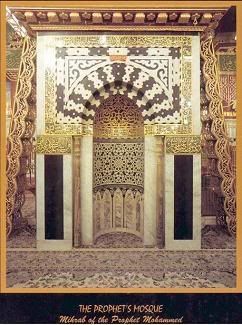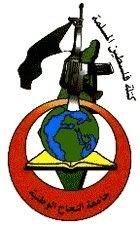Related maritime links: Fred Fry’s Maritime Monday 94 and more stories of “skyhooks” from Eagle1.
————————————————————
 CDR Samuel D. Dealey, USN
CDR Samuel D. Dealey, USNWhile digging about last week on the topic of Fresh Water Submarines, I found the story of this valient man from the annals of submarine warfare. While Skipper of the
USS HARDER (SS-257), he made his place in history and quite lofty place it is, complete with these two medals:

The picture is misleading: Dealey wore three stars on his Navy Cross (indicating 4 awards of that medal) and also had been awarded the Silver Star, as well.Born September 13th, 1906, Samuel Dealey graduated from the US Naval Academy, class of 1930, and went to the fleet, first as a Surface Warfare Officer aboard the USS NEVADA (BB-36). He then went to submarine training, and was in command of S-20 when WWII broke out. He assumed command of the newly built USS HARDER on December 2nd, 1942 and took her on 6 war patrols.CDR Dealey did not get off to a great start. He initially “bilged out” of the Academy for low grades, but was re-instated, finally graduating. Of the submariners awarded the Medal of Honor posthumously, Samuel Dealey was the one who sunk the greatest amount of tonnage during his time in the combat zones of the Pacific:
After a shakedown off the East Coast, Dealey survived a “blue-on-blue” attack by a Navy patrol bomber in the Caribbean to bring Harder to the Pacific in the spring of 1943.
Harder left Pearl Harbor on her first war patrol on 7 June, bound for the coast of southern Honshu. Dealey In his first attack on a two-ship convoy late on the night of 21 June, Dealey was driven deep by an aggressive escort and crashed into the muddy bottom – an inauspicious beginning, even though it now appears that one target may have been damaged. Dealey backed himself out of the mud, and two nights later had his first real success in torpedoing the ex-seaplane tender Sagara Maru (7,000 tons) and crippling her so badly that she was beached on the Japanese mainland and abandoned as a total loss. Over the next four days, Dealey made seven attacks on three different convoys, but post-war analysis credits him only with possible damage to one ship.
Harder returned to Midway on 7 July with one of her four diesel engines completely broken down. She was one of 12 Gato-class boats fitted originally with the troublesome Hooven-Owens-Rentschler (HOR) engines, whose original design was licensed from the German firm MAN (Maschinenfabrik-Augsburg-Nürnberg) in the 1930s. After some hasty repairs and bearing a generous inventory of spare engine parts, Harder returned to sea for her second war patrol off Honshu in late August and in 14 days made nine attacks, which netted Harder a total of five ships for 15,000 tons in the post-war accounting. Once again, the ship suffered engine problems throughout the patrol but returned safely to Pearl Harbor, via Midway, on 7 October 1943.
[…]
The best detail of the USS HARDER’s war record I found on the web is contained on the page linked above.
Patrol reports, for HARDER’s first two, are here and here. Those reports were found at a page where a number of links take you to submarine war patrol reports. A lengthy synopsis of HARDER’s patrols, listing subs in company and with information on her targets is found here.
The USS HARDER (SS-257) was lost at sea during combat on August 24th, 1944 under depth charge attack of Luzon in the Philippines. Some info from the sub in company, USS HAKE (SS-256), indicates the HARDER’s loss. CDR Dealey’s citation reads:
Rank and organization: Commander, U.S. Navy. Born: 13 September 1906, Dallas, Tex. Appointed from: Texas. Other Navy awards: Navy Cross with 3 Gold Stars, Silver Star Medal.
Citation:
For conspicuous gallantry and intrepidity at the risk of his life above and beyond the call of duty as Commanding Officer of the U.S.S. Harder during her 5th War Patrol in Japanese-controlled waters. Floodlighted by a bright moon and disclosed to an enemy destroyer escort which bore down with intent to attack, Comdr. Dealey quickly dived to periscope depth and waited for the pursuer to close range, then opened fire, sending the target and all aboard down in flames with his third torpedo. Plunging deep to avoid fierce depth charges, he again surfaced and, within 9 minutes after sighting another destroyer, had sent the enemy down tail first with a hit directly amidship. Evading detection, he penetrated the confined waters off Tawi Tawi with the Japanese Fleet base 6 miles away and scored death blows on 2 patrolling destroyers in quick succession. With his ship heeled over by concussion from the first exploding target and the second vessel nose-diving in a blinding detonation, he cleared the area at high speed. Sighted by a large hostile fleet force on the following day, he swung his bow toward the lead destroyer for another “down-the-throat” shot, fired 3 bow tubes and promptly crash-dived to be terrifically rocked seconds later by the exploding ship as the Harder passed beneath. This remarkable record of 5 vital Japanese destroyers sunk in 5 short-range torpedo attacks attests the valiant fighting spirit of Comdr. Dealey and his indomitable command.
That’s quite an accomplishment. Our submarines, strategically, were mostly in place to cut off supplies and troops. They took on the combatants when they had to.
Two books about the USS HARDER, “Through Hell and Deep Water” by VADM Charles Lockwood, USN and COL Hans Adamson, USAF, (published in 1956) and “The Destroyer Killer” by Edwin Hoyt tell of the war record this storied submarine.

In honor of Samuel Dealey, the
USS DEALEY (DE-1006) MAX Payne release was commissioned on June 3rd, 1954, as the lead ship of the
DEALEY Class of destroyer escorts.USS DEALEY (DE-1006) was assigned to the Atlantic Fleet and made cruises to the Caribbean, the Mediterranean, and around South America, exercising with navies from that part of the world. One of her duties assigned was to
“escort” Russian merchants into Cuba, observing their cargo loads, and wait for their departure, to observe the differences.She was decommissioned July 28th, 1972 and transferred to the Uruguayan Navy the same day, being re-commissioned as
ROU 18 De Julio (DE-3). I suspect I operated with DE-3 during UNITAS XXIV in 1983, as I recall doing surface gunnery exercises with a Uruguayan ship. If that was the case, then
this sea story happened while in company with the ex-USS DEALEY.The USS DEALEY’s website is
here.
Bonus link: the Sub Art site.















